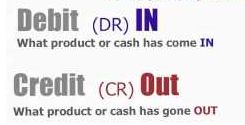Fritz Sybergs Vej 9
DK 8270 Hojbjerg
Scandinavia
info@dynamicbusinessplan.com


Contribution Margen or Gross Profit
The most important figure in the profit and loss statement is Contribution Margen, also called Gross Profit.
The difference between Turnover and Variable Cost shows how much money you have got left to pay your rent, telephone, internet access, marketing and your own salary (profit of the firm).
Example
If you sell CDs at $ 25.- on the internet and promote it like this: "No
postage and packaging", your calculation could look like this:
|
Sales price (Turnover): |
25.00 $. |
|
- Purchase price at CD company: |
18.75 $ |
|
- Packaging and padded envelope: |
01.00 $. |
|
- Postage: |
02.00 $. |
|
= Gross Profit: |
03.25 $ (13 %) |
This calculation shows you that each time you sell a CD at 25 $. you have 3.25 $ left. This has to cover other expenses than those related directly to purchasing, packing and dispatching the CD.
Contribution Ratio
You can also calculate a percentage, then it is called contribution ratio. It is done like this:
- Gross Profit x 100 / sales price = Contribution Ratio
In the above CD example the contribution ratio is:
- 3.25 $ x 100 / 25 $. = 13 %

Gross profit when selling services
The Gross Profit differs substantially between different trades. The above
example generates a relatively modest contribution margin.
Compare this to a consultant giving management and development presentations
which may cost 1.500 $ per presentation. Here you may only have 50 $ of direct
expenses for the Taxi taking you to the hotel where the presentation is held.
This generates a 1450 $ Gross Profit (97 % in contribution ratio).
But then you probably have considerable fixed costs and you cannot expect to
sell presentations 40 hours a week.
The same thing applies to accountants, lawyers, psychologists and others.

If you do build a great experience, customers tell each other about that. Word of mouth is very powerful.
- Jeff Bezos, Amazon.com founder





































